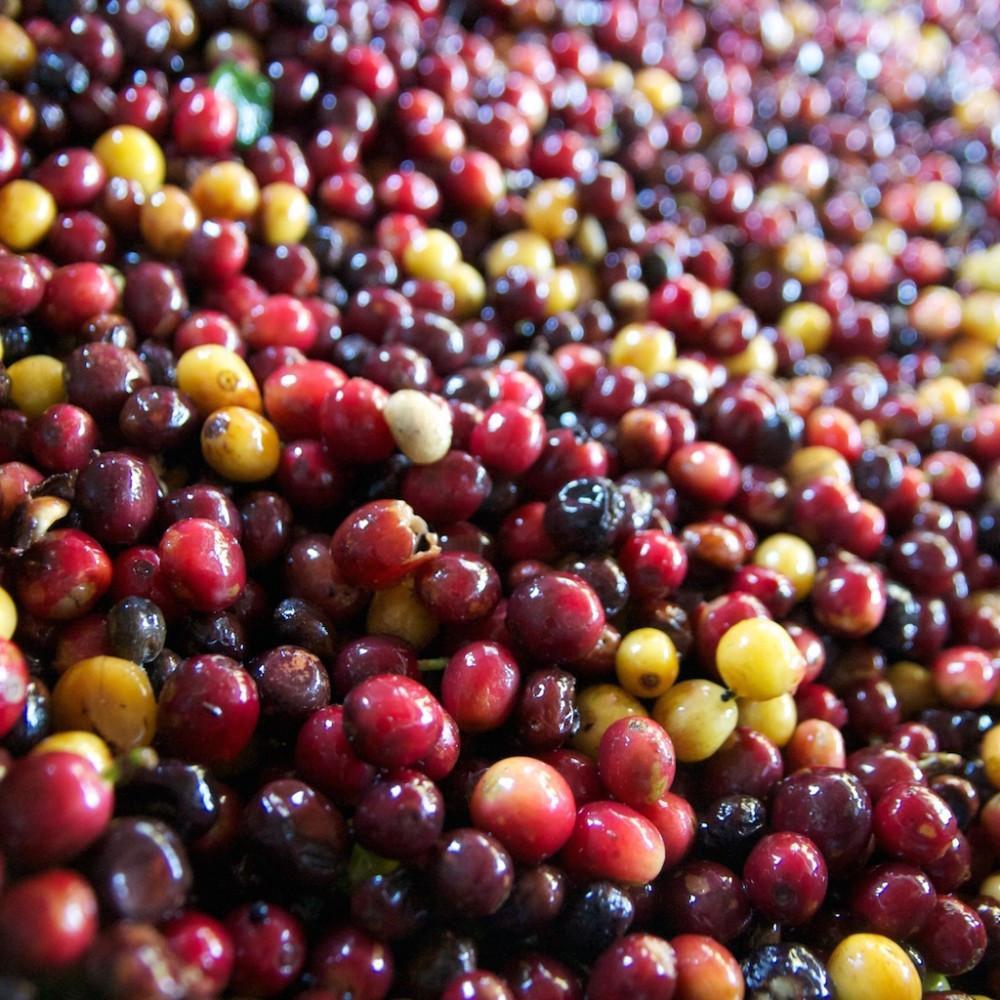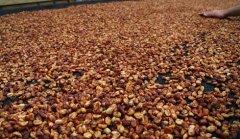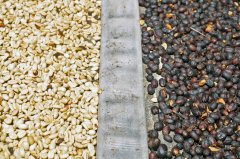The advantages and disadvantages of honey treatment and the scope of application comparison between Costa Rican yellow honey and red honey

Professional coffee knowledge exchange more coffee bean information please follow the coffee workshop (Wechat official account cafe_style)
Pulp treatment refers to what honey treatment changes which step of the raw bean treatment method
There is a new way to treat raw coffee beans called honey processing honey treatment.
We call it peeling and tanning.
Remove the thick peel of the coffee cherry and retain the sticky pulp layer below it.
Next, it does not use fermentation to remove the sticky pulp layer, but let it dry directly with this layer, and then remove the sticky layer and shell.
But the difficulty is in the process of drying.
Since the sticky pulp layer is still on the coffee beans, it must be flipped frequently in the first few days.
To prevent the coffee beans from sticking together, it requires more artificial parts than the normal washing method. Increase in labor cost
< advantages >
The advantage of honey treatment is to enhance the body and sweetness of coffee.
Relatively reduce its acidity, and the aroma will be more detailed.
The quality of raw beans can be comparable to that of washing, but this is the taste when the honey treatment is carried out perfectly.
If it is not handled properly, the flavor will be worse than washing or tanning, the taste will be dirty and there will be a strong smell of soil.
To put it simply, honey treatment is a way to remove the peel of coffee cherry, leave the sticky pulp, then dry it, and then remove the pulp layer and pectin layer.
However, during the drying period, it is necessary to turn continuously with high frequency to avoid mildew caused by sticking between the pulp, and to avoid excessive fermentation.
Therefore, it will require more manpower and time cost than other treatment methods.
If we talk about honey treatment in detail this time, the retention ratio of pulp can be roughly divided into the following categories.
30% Murray 40% flesh [yellow honey]
50% Murray 60% flesh [red honey]
70% Murray 80% flesh [black honey]
Basically, the more pulp you leave, the sweeter it will be, and the thicker body will be.
Generally speaking, honey treatment generally refers to [yellow honey]. The more flesh is left, the more meticulous and careful the processing needs.
Coffee friends may ask what is the taste of honey treatment?
Based on our experience,
Honey treatment is a kind of coffee with obvious coffee pulp (one of 36 flavors).
I don't think it's possible to understand the taste of coffee pulp.
Seriously, it can't be explained if I haven't eaten real coffee pulp.
The pulp of coffee is very sweet, and when dried, it will feel like the rhyme of fermented wine, so that you may be able to understand it.
.
Important Notice :
前街咖啡 FrontStreet Coffee has moved to new addredd:
FrontStreet Coffee Address: 315,Donghua East Road,GuangZhou
Tel:020 38364473
- Prev

The degree of retention of pectin pulp during honey treatment determines honey treatment, graded honey treatment and solarization.
Professional coffee knowledge exchange more coffee bean information Please follow the coffee workshop (Wechat official account cafe_style) the pulp treatment refers to what honey treatment has changed the raw bean treatment which step coffee is a kind of agricultural products, fresh is one of the indispensable elements of good coffee. When buying coffee beans, you will often see Washed and Natural.
- Next

What is honey-treated Honey Processing? What is the flavor of coffee beans treated with honey?
Professional coffee knowledge exchange more coffee bean information please pay attention to the coffee workshop (Wechat official account cafe_style) pulp treatment refers to what honey treatment changed the raw bean treatment which step coffee treatment is divided into washing, sun and honey treatment, have you ever thought that honey treatment is related to honey? After understanding it, we will know that the honey treatment method is different from
Related
- What is the meaning of lactic acid fermentation with coffee bean treatment?
- How to judge the state of foam by sound?
- How does the latte pull out the unicorn pattern? Come to get for a little trick to improve the flower pull!
- Will flower pulling affect the taste of the latte?
- Do you know the history of coffee?
- The difference between honey treatment and sun washing what is raisin honey treatment?
- What kind of milk can a novice use to make coffee foam to keep the foam longer? The correct method and skills of milking tutorial sharing
- Why do washed coffee beans taste sour? Flavor characteristics of washed Coffee
- Introduction to the skill of how to practice the size and height of water injection around the circle of hand-brewed coffee
- How do beginners practice coffee flower drawing from scratch?

